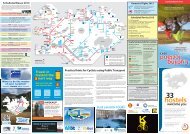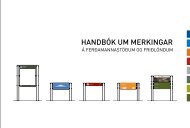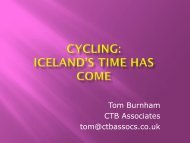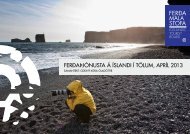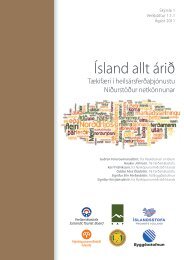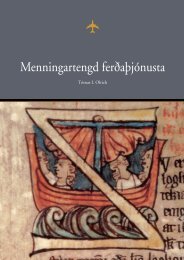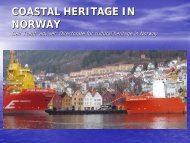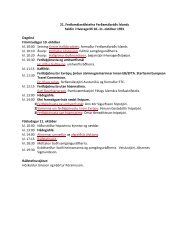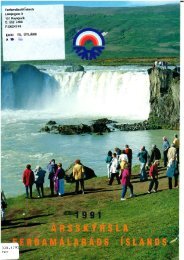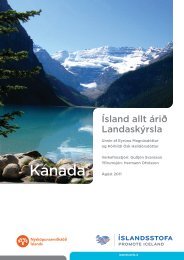Untitled
Untitled
Untitled
Create successful ePaper yourself
Turn your PDF publications into a flip-book with our unique Google optimized e-Paper software.
Photographic representations in tourism tend to depict vacant and<br />
pristine spaces awaiting the tourist. And potentially, it could be<br />
suggested that any tourist market would interpret the representation in<br />
terms of an experience, awaiting fulfilment at that destination.<br />
Specifically, photographic representations in tourism define “groomed<br />
spaces” that are readily identified as a tourism product – part of a<br />
destination completely commodified and ready for consumption (Hunter<br />
2008, p. 360).<br />
Also the tourist imaginationing needs to be groomed for particular<br />
tourist and tourism purposes. The story about Iceland as a tourist<br />
destination that we have now told cannot be separated from our own<br />
representation, our selective use of sources for our own purposes here.<br />
Tourism imaginationings as they appear in promotion and marketing<br />
material, advertising, policy documents, books, research articles in tourism<br />
studies, or whatever the medium, are not the same as the imaginationings<br />
of tourists.<br />
Nevertheless, there may also be a cartographic pattern which<br />
connects. For if there was no other place to imagine, that is, “to form a<br />
mental destination image of”, then why and where should one travel? The<br />
point is that without the faculty of human imagination, without the ability<br />
to make the absent present and vice versa, there would be no tourist<br />
destination images and no tourism as we have come to know it. In other<br />
words:<br />
Modern tourism is based on the reproduction (and re-enactment) of the<br />
coming together of representation and (bodily) experience, of<br />
abstraction and materiality (Minca 2007, p. 434).<br />
In condensed form this suggests that the impetus to travel and to<br />
become a tourist in the modern sense is driven by imagined possibilities<br />
in-between map and territory opened up through cartography and<br />
“cartographic reason” (Olsson 2007). In effect this inevitable gap produces<br />
a desire as impossible to resist as to realize completely.<br />
Our own conceptualization “tourist imaginationings” now appears<br />
as situated in the abyss between abstract cartographic representations and<br />
the material geographies on the Earth. Triggered by the difference between<br />
map and territory many now travel extensively for touristic purposes, yet it<br />
is important to remember that for the majority of the world’s population<br />
there is still in practice no-where else to.<br />
47



